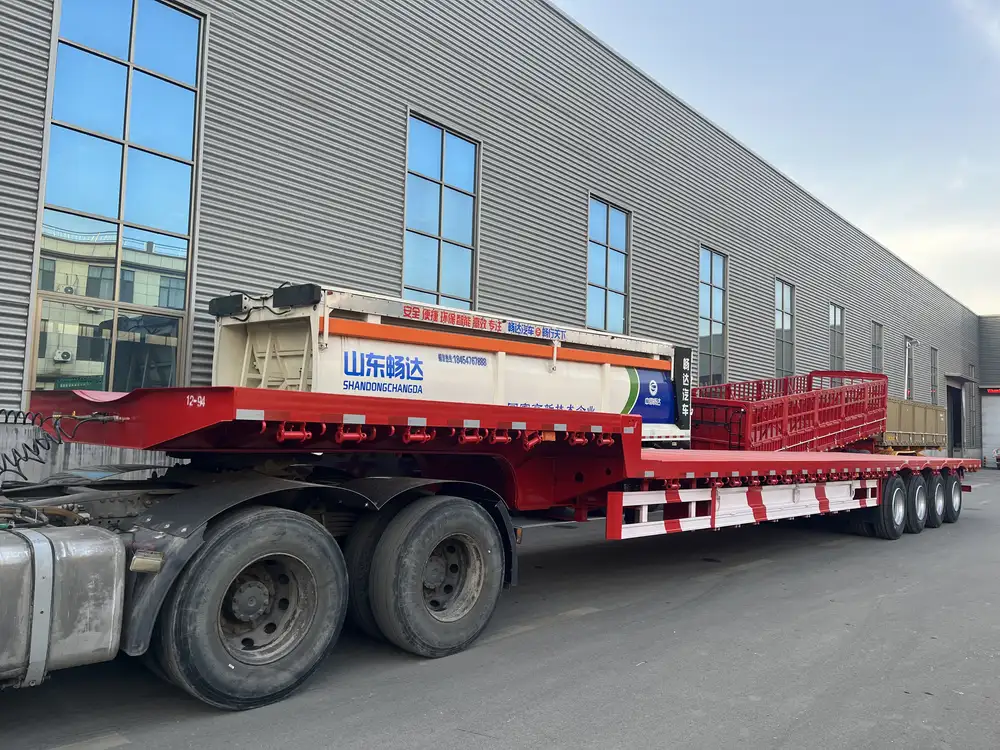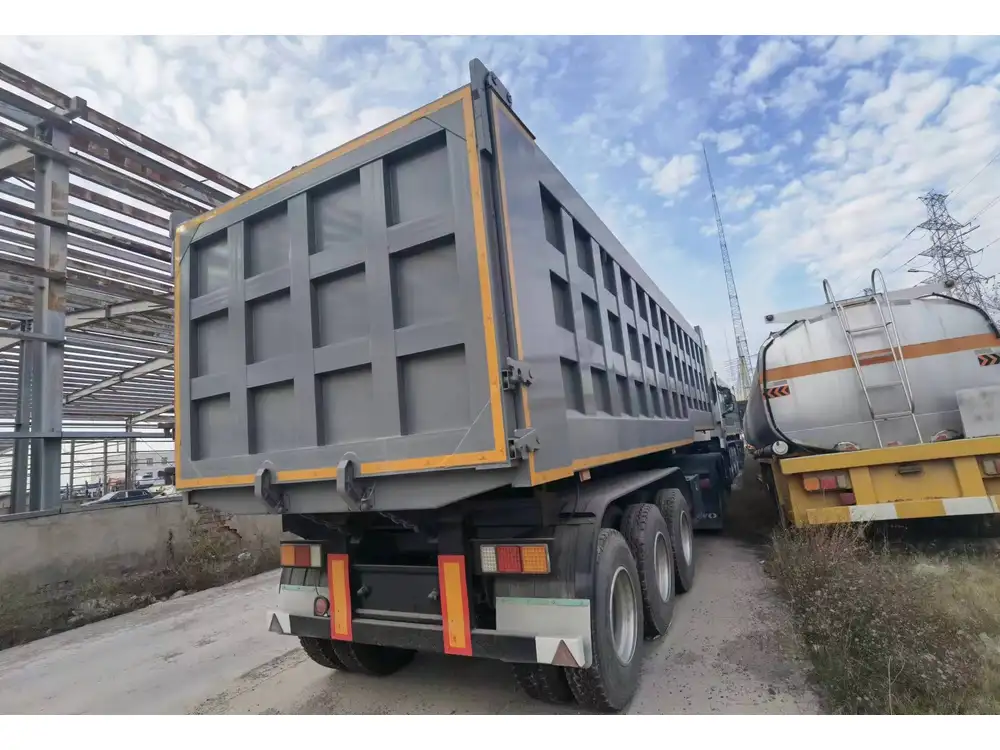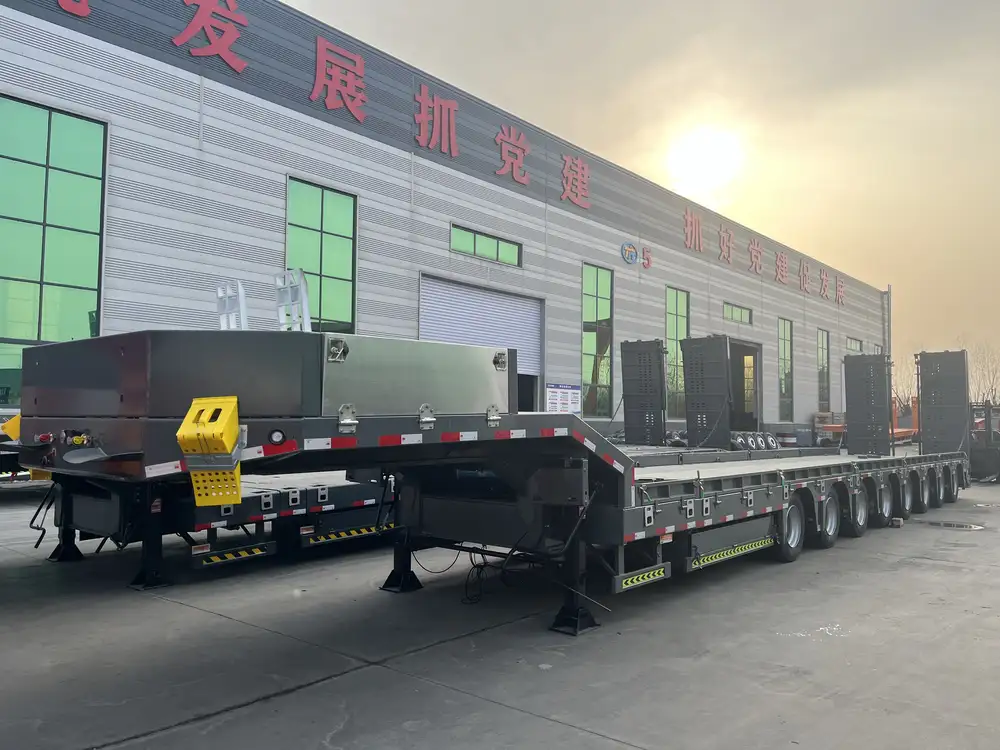When it comes to transporting goods efficiently, one of the most vital aspects to consider is the dimensions of the semi-trailer being used. Among these dimensions, the height plays a crucial role in determining what can be loaded and how it interacts with the environment. In this article, we will delve deep into the inquiry: how tall is a semi, addressing various aspects that impact this measurement. Whether you are a manufacturer, transporter, or simply an enthusiast, understanding the complexities of semi-trailer height is pivotal.
Table of Contents
- What is a Semi-Trailer?
- Typical Heights of Semi-Trailers
- 2.1 Standard Height
- 2.2 Specialty Height Variations
- Factors Influencing Semi-Trailer Height
- 3.1 Load Specifications
- 3.2 Regulatory Standards
- 3.3 Design and Configuration
- Height Regulations by Region
- Consequences of Improper Height Management
- Best Practices for Semi-Trailer Height Management
- Conclusion
1. What is a Semi-Trailer?
A semi-trailer, a vital component of freight transport, is a non-motorized trailer designed to be attached to a truck or a tractor. Unlike traditional trailers, semi-trailers have a unique design where a portion of their weight is supported by the towing vehicle, enhancing stability during transit. This configuration allows for various cargo types to be transported over significant distances while accommodating different loading techniques.

2. Typical Heights of Semi-Trailers
2.1 Standard Height
The industry standard height for most semi-trailers typically ranges between 13.5 feet (4.1 meters) and 14.5 feet (4.4 meters). This measurement is crucial for a variety of reasons, ranging from compatibility with loading docks to ensuring compliance with highway clearance limits.
Quick Reference Table: Standard Semi-Trailer Heights
| Type of Semi-Trailer | Height (feet) | Height (meters) |
|---|---|---|
| Standard Flatbed | 13-14 | 3.96-4.27 |
| High Cube | 13.5-14.5 | 4.1-4.4 |
| Refrigerated | 13.5-14 | 4.1-4.27 |
| Drop Deck | 13-13.5 | 3.96-4.1 |

2.2 Specialty Height Variations
While standard heights are well-established, several specialty trailers necessitate different height considerations. For instance, lowboy trailers, designed for transporting tall and heavy loads, may be shorter in height—typically around 12 feet (3.66 meters). Conversely, high cube trailers can soar up to 14.5 feet (4.42 meters) to accommodate additional cargo volume.
3. Factors Influencing Semi-Trailer Height
3.1 Load Specifications
The height of a semi-trailer frequently needs to accommodate the nature of its cargo. For example, oversized materials like machinery or construction equipment may require additional height clearance, necessitating custom trailers for specific loads.

3.2 Regulatory Standards
Different regions have specific regulations governing maximum heights for commercial vehicles. In the United States, the Federal Highway Administration generally allows a maximum height of 13.5 feet (4.1 meters) for vehicles on interstate highways. However, state regulations can vary dramatically, making it essential for operators to stay informed about local laws.
| Region | Maximum Height (feet) | Maximum Height (meters) |
|---|---|---|
| United States | 13.5 | 4.1 |
| Canada | 13.5 | 4.1 |
| European Union | 13.1 | 4.0 |
| Australia | 13.1 | 4.0 |
3.3 Design and Configuration
The design of the semi-trailer plays an influential role in determining its height. Unique configurations, such as tandem axle setups, can impact the overall stature of the trailer while changing weight distribution and handling. Custom-designed trailers often incorporate modifications that alter their height for specific cargo needs and facilitate better aerodynamics.
4. Height Regulations by Region
Awareness of regulatory standards concerning trailer heights can prevent potential legal ramifications and logistical challenges.
United States: A standard maximum height of 13.5 feet is widely accepted; however, specific states may permit higher loads with appropriate permits, often up to 14.6 feet in select cases.
Europe: The European Union has a general maximum limit of 13.1 feet, aligning with environmental regulations that enhance aerodynamics and reduce fuel consumption.
Australia: Height limits are similar, typically capping at 13.1 feet, but unique exceptions can arise based on road requirements or specific institutional directives.

5. Consequences of Improper Height Management
Failing to adhere to height regulations can lead to formidable consequences ranging from legal fines to operational disruptions. Here are some potential repercussions:
- Legal Fines: Exceeding height regulations could summon fines from law enforcement agencies, substantially increasing the cost of transport.
- Cargo Damage: Height exceeding the permissible limit may lead to the loss of cargo or equipment when attempting to navigate under low overpasses or bridges.
- Route Alterations: Drivers may encounter unexpected detours if they do not accurately account for their vehicle’s height, leading to delayed deliveries and increased fuel costs.
- Safety Hazards: Increased risk of accidents, as oversized vehicles may pose visibility issues or make abrupt maneuvers unsafe.
6. Best Practices for Semi-Trailer Height Management
Effective height management practices can ensure safe and efficient transportation. Here are several recommended strategies:
6.1 Understanding Load Provisions
Always assess the specifications of the cargo being transported. Loads that require height adjustments should prompt the selection of appropriate trailer types and configurations.

6.2 Regular Inspections
Conduct routine inspections to ensure trailers remain within standard height limits. A missed measurement could lead to significant operational and legal challenges.
6.3 Utilizing Technology
Technology such as automated height detection systems can enhance efficiency, offering accurate real-time assessments that inform operators of potential compliance issues.
6.4 Training Drivers
Driver education on the implications of height management and vehicle regulations can significantly minimize risks associated with height-related issues. Training sessions can prepare operators to recognize signs indicating clearance levels and appropriate handling techniques.
| Best Practices for Height Management |
|---|
| Assess load specifications regularly |
| Conduct routine trailer height inspections |
| Invest in automated height detection systems |
| Implement driver training programs |

7. Conclusion
In conclusion, the height of a semi-trailer is not merely a number; it holds substantial implications for cargo transportation dynamics. By understanding the variables influencing semi-trailer height, the various standards set by governing bodies, and implementing best practices, manufacturers and operators can facilitate safe, compliant, and efficient transport solutions. This knowledge is invaluable in today’s competitive logistics environment, enhancing operational efficiencies while ensuring the seamless movement of goods across landscapes. The understanding of “how tall is a semi” arms you with the essential knowledge to optimize transportation logistics and maintains compliance within the convoluted framework of height regulations.



